Gerry Mateo, a retired veteran, found an unexpected opportunity during the pandemic with the creation of FilAm Vets Hydroponics Farm. As the firsthy ...
How Nanue’s Farm Grows Fresh Leafy Greens with Hydroponics
Written by: Carolyn Young
Carolyn Young is a business writer who focuses on entrepreneurial concepts and the business formation. She has over 25 years of experience in business roles, and has authored several entrepreneurship textbooks.
Published on October 29, 2024
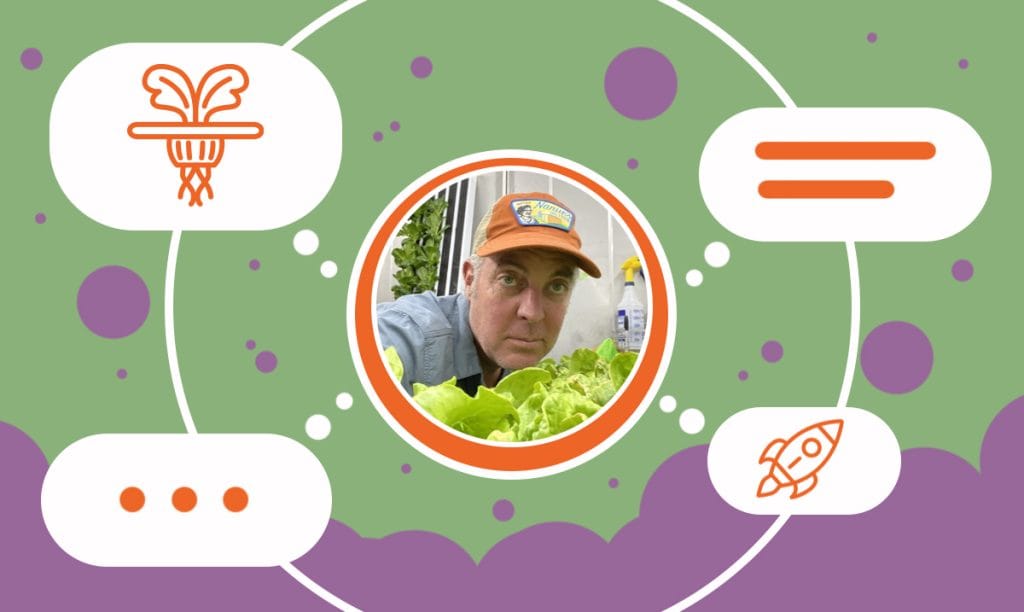
Innovation is key to sustainability and success, especially in agriculture. Trevor Spear, owner of Nanue’s Farm, has embraced this philosophy by adopting hydroponics — a soilless farming method that’s revolutionizing food production. In this interview, Trevor shares the story behind Nanue’s Farm, the pivotal moment that led him to hydroponics, and how he maintains pesticide-free, high-yield crops. He also offers valuable insights into the role of technology in agriculture and advice for aspiring hydroponic farmers looking to break into this growing industry.
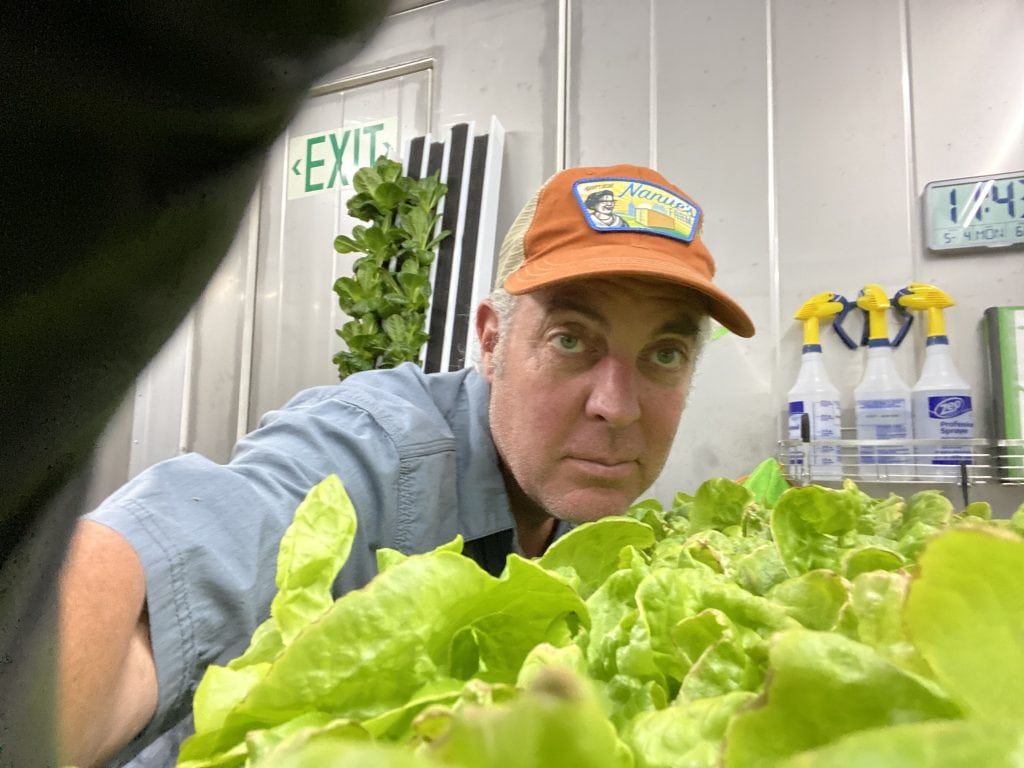
Inspiration and Beginnings
SBS – What inspired you to start Nanue’s Farm, and how did you choose hydroponics as a growing method?
Trevor – I am a general contractor by trade. My father was a builder, too. I’ve had various construction companies in different aspects of construction over the years. In 2017, I sold my last business and considered retiring from construction. However, it’s like the Godfather — you can’t really retire.
Sometime in 2018, I read an article in Popular Mechanics about Kimbal Musk, Elon’s brother. He is a restaurateur and has restaurants in Denver and Boulder. The article was about him growing his own leafy greens and root vegetables to his standards so he knew where his food came from. There’s an ongoing struggle with leafy greens because of various kinds of diseases, and that comes from the way dirt farmers grow their vegetables (it’s not necessarily their fault, though). There are too many parameters for them to stay safe and control what they produce.
In controlled environment agriculture (CEA), we can control those parameters, and Kimball knew that, so he started his own hydroponic growing inside Boulder, Colorado. His company, called Square Roots, was also mentioned in the article. It has 12 containers in Brooklyn, and they got them from Freight Farms. I think that significantly expanded Freight Farms. Although they don’t recognize that Kimbal was some force behind it, it’s too obvious that he was. From that article, I contacted Freight Farms, went up there in January 2019, and bought a farm (a 40-foot shipping container). It was delivered in the fall of 2019, and we started our business operations then.
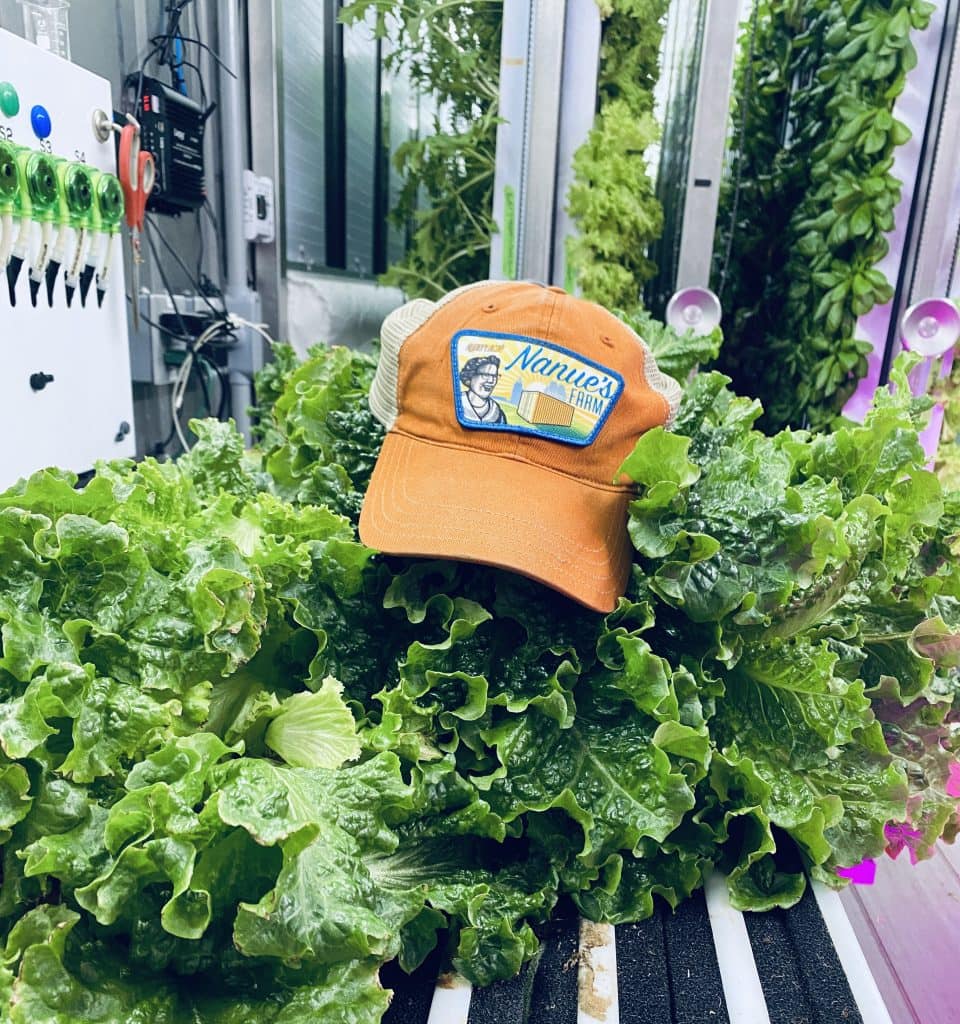
Discovering Hydroponics
SBS – Did you know anything about hydroponic farming before that, or was it just that article that inspired you to start?
Trevor – A little bit! Being a general contractor, you’re a jack of all trades. Farmers are also jacks of all trades. My mother’s side of the family were farmers in Eastern North Carolina. My farm’s named after and in honor of my grandmother — Nanue’s Farm. I think it was supposed to be Nanny, but my cousin couldn’t pronounce it so he said Nanue, and it stuck. I would spend summers at her house. She had a half-acre garden, and we would go up and down the rows. She would teach me everything about growing stuff. My passion for growing started when I was eight or nine, and it has never stopped. I’ve always had gardens, and I’ve always grown things. That was a hobby that I turned into a business.
It was started as a side hustle, and it still is. I still do other things in construction. But, the farm has grown. Now, we have two containers and are getting ready to get a third one in January. My farm is a recognizable force in the industry, especially in North Carolina, in the Raleigh area.
I didn’t notice it at first, but maybe the universe or God pointed me in a direction, and I soon realized that growing things is a lot like construction. I have done many things in the construction world, mainly residential. There, you start with a lot that has trees on it. You clear the trees, you drain the land, you dig the footer, you put in the foundation, etc. In farming, the process is very similar. You start with the seed. We sow the seeds, grow them, transplant them, and grow our produce. There are a lot of similarities in watching something grow from nothing and become a viable product.
Pesticide-Free Farming
SBS – How do you ensure that your products remain free from pesticides while maintaining a high yield?
Trevor – What we do is called controlled environmental agriculture (CEA). The key word there is “control.” We control every aspect of the growing cycle. Like I said, we grow produce in a shipping container, so it’s sealed. We do farm tours from time to time, but those who visit have to be vetted. I don’t let anybody I don’t know inside the container. Since we control everything, we make sure we don’t need any pesticides or herbicides. We don’t have outside environmental forces affecting the growth of the plants, and no pests can get in the way.
The process is automated. The system has a closed-loop redundancy. The water pumps from the holding tanks, and the correct amount of liquid nutrients is automatically dosed to keep the level where we want it. We pump CO2 in there when the LED lights are running.
We can grow a head of lettuce in about six weeks, whereas a dirt farmer would take 10 or 12 weeks. We’ve mastered the technique of growing lettuce as efficiently as possible, which gives us the greatest yields and freshest leafy greens in a very short timeframe. We also grow herbs and edible flowers.
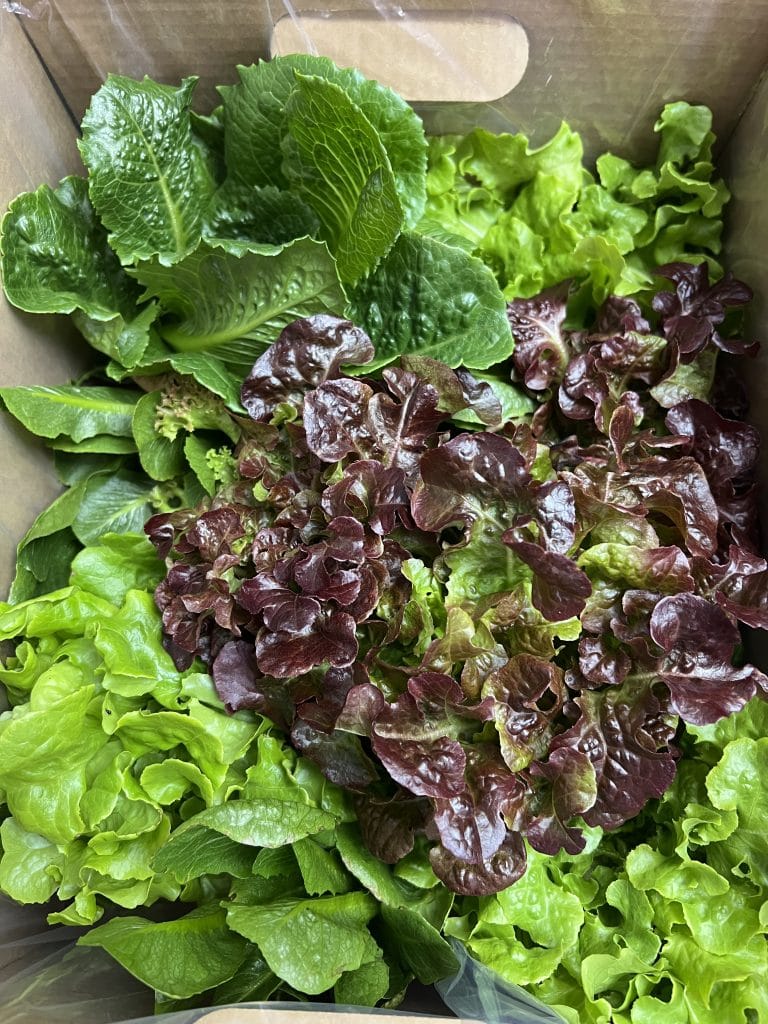
Traditional vs. Hydroponic Farming
SBS – Do you think traditional and hydroponic farming could work together to create the best products regardless of environmental conditions?
Trevor – It’s happening already. In the dirt farming world, they struggle with unknowns, and the biggest unknown is the weather — too much rain, too little rain, too hot, too cold. Every environmental condition affects them, and to overcome that, they must have pesticides, herbicides, and other things to maintain their farms. Whether it’s a hundred-acre farm or a one-acre farm, they still face those same challenges. Smaller farms do come with fewer challenges because farmers can get out there and check everything on a daily basis. On a thousand-acre farm, it’s not really possible.
There’s also a serious decline in soil nutrients. Farmers overwork the soil because big corporations have gotten involved and demand a certain yield. The correct way to farm is to give the land a rest. You should alternate — grow your product in one field, and after some time, plant cover crops in it and give it time off while you grow in another field. That keeps good nutrient levels in the soil. Dirt farmers can’t do that today because of the production level, cost of land, cost of equipment, etc. In CEA, we don’t have any of those obstacles to contend with because we are Mother Nature, so to speak, and we control everything. CEA still has problems; it’s not perfect, but we are in a better situation.
Traditional farming is evolving now. I know a lot of dirt farmers who have containers (from Freight Farms or competition) to supplement their products, especially during the winter.
Partnerships and Collaborations
SBS – What kind of partnerships have been crucial for you in your entrepreneurship journey?
Trevor – One of my friends is Ashley Christensen, a James Beard award-winning chef who has restaurants here in Raleigh. I consulted with her before I started this venture. Our original business model was (and still is) to work with the chefs directly to see what they needed and grow those products.
It took more than a year for chefs to really understand this system because they were so used to calling Cisco or US Foods or whoever their supplier is whenever they need Bibb or romaine lettuce and have it delivered the next day. We turned the apple cart upside down and created a business model where the yearly cycle didn’t matter— we could grow collards in the summer and Bibb lettuce in the winter.
We meet with creative, adventurous chefs on a regular basis and help them plan the menu for the next season. In August, we sat down with many of our chefs and planned their fall menu. Since we need six to eight weeks to grow a head of lettuce, we must get out before it. We grow odd things all year round, and we’ll take those samples to the chefs so they can check them out. If they like something and create a menu around it, we work out a contract to grow X amount of that product for them and have it delivered at this particular time for however long until they move on to their next menu item.
The quality is the biggest game changer. For example, our lettuce is hours old when we deliver it. If you go to the grocery store, at a bare minimum, it’s three or four days old. There’s no way around it. The chefs understand the importance of freshness. Also, they always want to promote and support their local farmers. When they come to a farm tour, it’s like a kid in a candy store. They walk down, they pull leaves off, and they taste them. That inspires them to be creative.
We do better when we’re working with a restaurant where the chef is the owner or operator because they want to provide the most unique dining experience for their customers. The restaurants where the chef is just an employee are not so great for us because the restaurant owner is looking at the bottom line, and they want profitability. The chef also wants profitability, but they care as much or equally for the creativity and uniqueness they provide their customers.
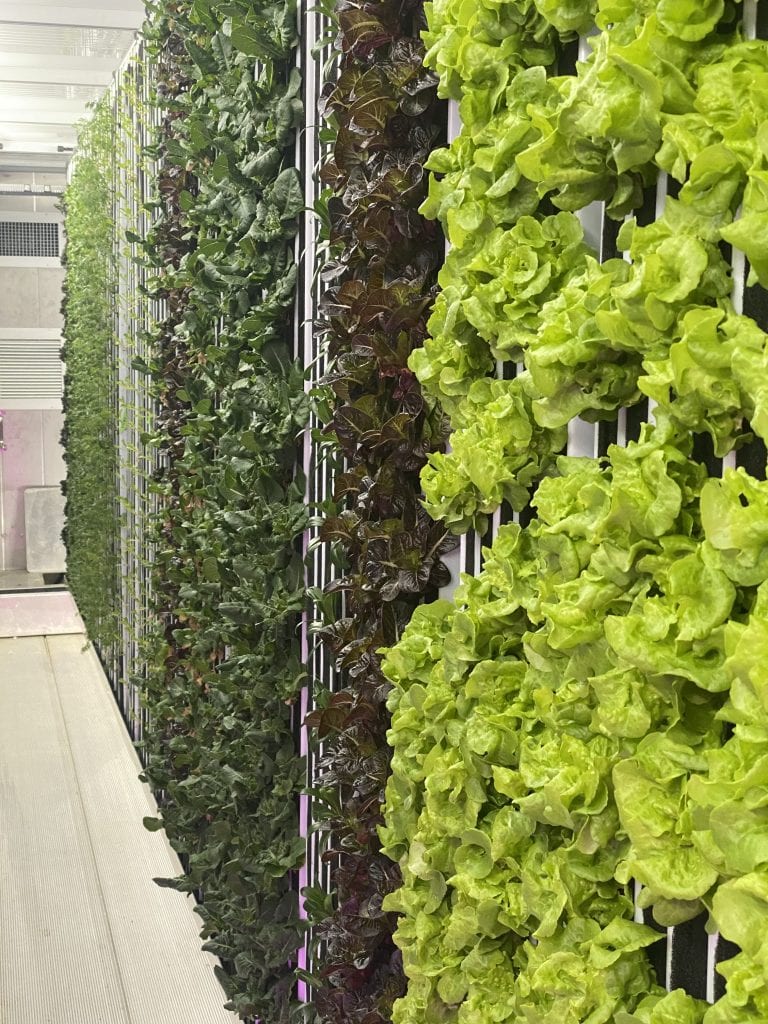
Risk Management
SBS – What kind of risks do you face, and how do you approach risk management in your business operations?
Trevor – We have a unique situation — we can see everything happening in real time. Each of our containers holds about 6,500 heads of lettuce. We harvest about 500 heads a week per a 40-foot container. But you get (or at least I do) to a point where you can walk into the farm and quickly find out what’s happening in a container by smell or sound. That’s six years of doing this. When you know exactly what’s going on in CEA, you can attack the problem very quickly and overcome it. Our competition, the dirt farmers, can’t do that. They have too much area to cover.
Power is our biggest nemesis, but we have backup generators on standby. We also have crop insurance, just like a farmer does. We have two farms (with a third on the way), but we grow the exact same product in both farms. In case one farm goes down for some reason, we have a secondary farm growing the same things. The odds of both farms going down is less than one. In this world, you must have multiple farms to make it worthwhile.
Also, there’s a daily review of performance. We have our scheduled maintenance every week. It took a while, but once you get all that figured out, it runs pretty efficiently with very little risk. However, there’s still risk. We still have pumps that go down or sensors that go bad, but we have systems in place to fix that within hours.
The Role of Technology
SBS – Do you believe that technology will play an even bigger role in agriculture in the future?
Trevor – I think so. The technology that we have for growing is pretty robust, and it’s getting even better. The control for the farm is a computer algorithm that runs everything. I can log in from my desktop and see what’s going on. I can control everything with an app on my phone. We have cameras inside the farm, so I can look at all the produce and see if the lettuce is wilting, which means the pump went down.
I don’t think we’ll ever reach a point where you don’t have to have some kind of human presence. Not everything can be 100% robotic or automated because you still have to go in there and do some manual stuff. The dirt farmer is using technology, too. They’ve got their combines and the equipment they use and have sensors in the fields. I think we’re learning from each other. They see the things that we can do in our controlled environment, and they’re doing that as best they can, but there’s still an element that they cannot control: Mother Nature.
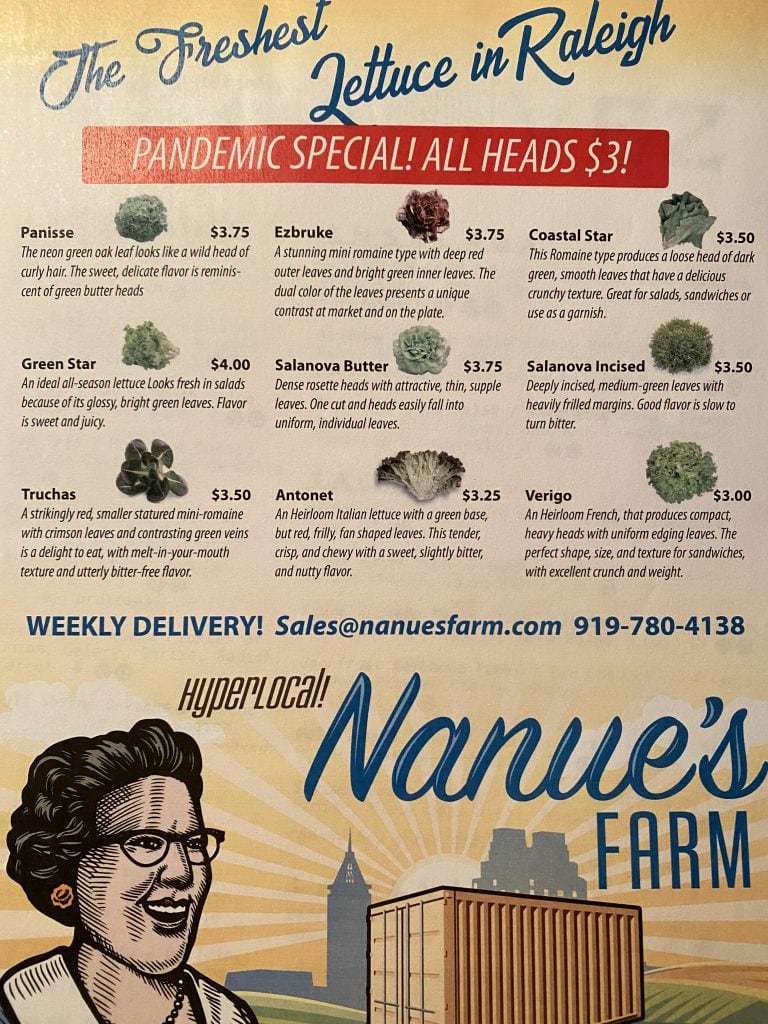
Advice for Aspiring Hydroponic Farmers
SBS – What advice would you give someone who wants to start a hydroponic farm?
Trevor – They need to know their market. They need to create their footprint and have conversations with their end customer — chefs or a B2C model — to understand their needs and see if there’s a fit. We started a B2C model during COVID because we had to, but that wasn’t our original business plan.
Our main markets are Downtown Raleigh, Durham, and Chapel Hill, North Carolina. There are many high-end boutique restaurants, award-winning restaurants, and award-winning chefs, so that fits our model. If you’re in the Midwest or some rural setting, you won’t have that clientele, so you need to look at a farmers market or direct-to-the-consumer.
You must understand that there’s a lot of cost upfront in CEA, so there’s a little bit longer payback. The equipment is very expensive. You need to work out the business plan to make sure you can make it profitable and get your debts paid off in the two- or three-year cycle. That’s what we’ve done, and that’s how we can buy a container from our profits.
I have seen many stories firsthand where Freight Farms would sell their containers with this plug-and-play model sales pitch. They have — probably from some of my pushback — changed that model, and now they vet their prospects before selling. Before, people who weren’t handy and didn’t have a skill set were buying these containers thinking they could turn it on and it would just do everything automatically, and that’s not the case. We struggle just like every farmer. Some days, there are problems, and you must figure out how to overcome them. Someone has to have a skill set and not be scared to do the hard work.
Also, like with any business, you need a good six-month runway, and you need to start selling your product before you even sow the first seed. You need to get the word out to your consumers about what you’re doing and get them excited about the produce you’ll have ready to sell in two or three months. It’s never too early to start selling what your belief is!
Comments
Leave a Reply
Subscribe to Our Newsletter
and gain insider access to cutting-edge business insights and trends.
Featured Resources

How a Retired Veteran Built Kern County’s First Hydroponic Farm
Published on September 6, 2024
Read Now
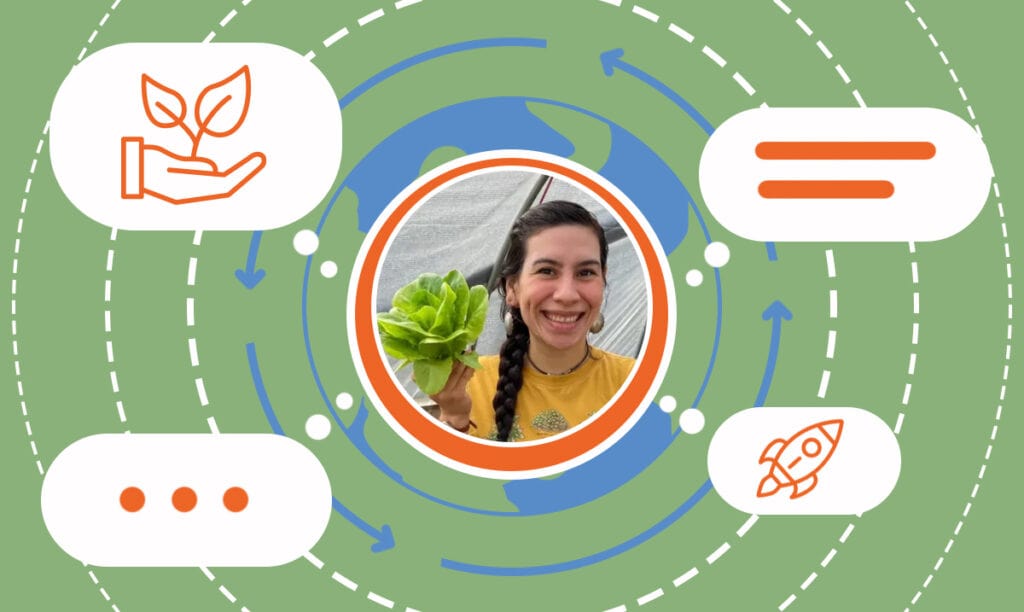
Marcella Juárez on Leading Sustainable, Organic Local Farming
Published on March 11, 2024
As the owner and farm manager of Palo Blanco Farm and Ranch in Laredo, Texas, Marcella Juárez has revitalized a family legacy spanning over 160year ...
Read Now

Joe Nash on Advancements in Hydroponic Gardening Solutions
Published on March 7, 2024
Orlando Hydroponics, under the guidance of Joe Nash, has emerged as a leader in the realm of hydroponic solutions, combining innovation andenvironme ...
Read Now
Get some Nanue’s lettuce and you’ll never go back! Trevor’s an awesome guy as well 🙂